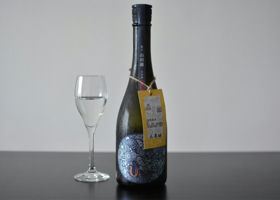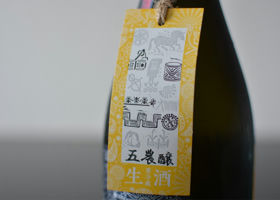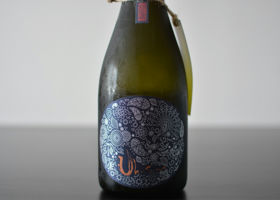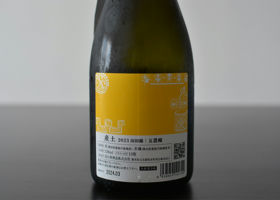



Hori
This is the second bottle produced. The last bottle was a Ninonunomoto, and this time it is a Go-Nonomoto.
Two weeks after I bought the second bottle, I found a slightly better priced bottle of San-do at the same liquor store. I was drawn into the world of san-do when I investigated why it was so expensive even though it looked the same.
In addition to "rice grown in the Wassui area of the Kikuchi River basin" and "sake brewing," the five regulations used are "no fertilizer," "no pesticides," and "wooden vat brewing," which are the same as those used for Ninonozo. These regulations are also shown on the tag and the illustration on the back label.
Poured into a glass, it looks almost identical to the Ninonozo. It has a thin, thick texture with fine air bubbles. The taste is roughly the same grape nuances as the Ninomoto, but with more depth and complexity. The trade-off for the complexity is that the latter half is less refreshing, but this allows the sweetness and umami to be fully appreciated.
The lactic acidity, which is felt more clearly than in the Ninoh brew, also helps to give the overall impression of strength.
This may be due to the image of the regulation, or it may not be accurate due to the time difference between the two wines, but I have the impression that the Ni-No-Brewery can be drunk light and the Go-No-Brewery can be tasted well.
Japanese>English